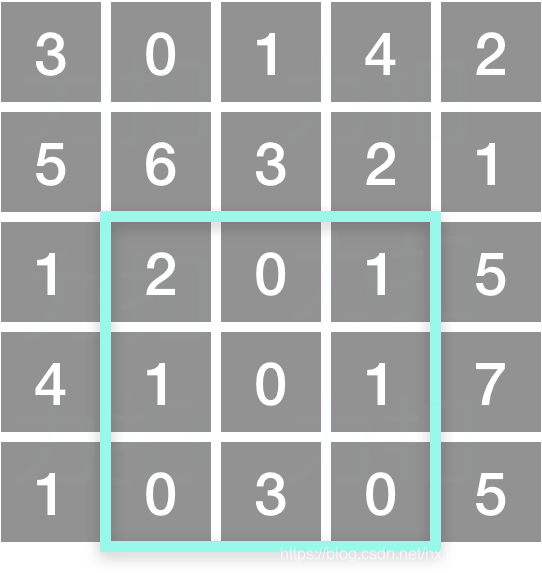给定一个二维矩阵,计算其子矩形范围内元素的总和,该子矩阵的左上角为 (row1, col1) ,右下角为 (row2, col2)。

上图子矩阵左上角 (row1, col1) = (2, 1) ,右下角(row2, col2) = (4, 3),该子矩形内元素的总和为 8。
示例:
给定 matrix = [
[3, 0, 1, 4, 2],
[5, 6, 3, 2, 1],
[1, 2, 0, 1, 5],
[4, 1, 0, 1, 7],
[1, 0, 3, 0, 5]
]
sumRegion(2, 1, 4, 3) -> 8
sumRegion(1, 1, 2, 2) -> 11
sumRegion(1, 2, 2, 4) -> 12
说明:
你可以假设矩阵不可变。
会多次调用 sumRegion 方法。
你可以假设 row1 ≤ row2 且 col1 ≤ col2。
思路:动态规划
每个点记录每行中以他为终点的这一行的和,之后累加区域中各行的行,再减去每行中多余的列
提交的代码:
class NumMatrix {
private int[][] dp;
public NumMatrix(int[][] matrix) {
if (matrix.length == 0 || matrix[0].length == 0) return;
dp = new int[matrix.length][matrix[0].length + 1];
for (int r = 0; r < matrix.length; r++) {
for (int c = 0; c < matrix[0].length; c++) {
dp[r][c + 1] = dp[r][c] + matrix[r][c];
}
}
}
public int sumRegion(int row1, int col1, int row2, int col2) {
int sum = 0;
for (int row = row1; row <= row2; row++) {
sum += dp[row][col2 + 1] - dp[row][col1];
}
return sum;
}
}
/**
* Your NumMatrix object will be instantiated and called as such:
* NumMatrix obj = new NumMatrix(matrix);
* int param_1 = obj.sumRegion(row1,col1,row2,col2);
*/
)





)












